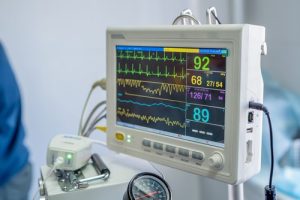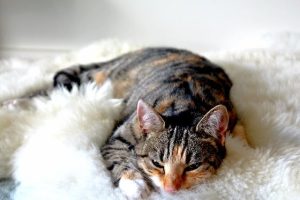General anaesthesia (GA) in cats is used on a daily basis in veterinary medicine. General anaesthesia is when cats are put into a controlled state of unconsciousness for a short time. To prevent them from moving around or feeling any pain. There are many reasons why vets use general anaesthesia in cats, such as dental work or surgery.
There are several options available for general anaesthesia in cats. Your vet will work out what is best for your cat based on their age, breed, behaviour, and if they have any health conditions. General anaesthesia can be used for cats of all ages. General anaesthesia is different from sedation, as when cats are sedated, they are not fully asleep.
What it’s for
What is general anaesthesia used for in cats?
General anaesthesia is used to put cats into induced sleep to do procedures that are not possible when they are conscious. Most vets use a combination of injectable and inhalation (gas) medications. Sedation medications are almost always used before a GA to help smooth the induction and recovery of the anaesthesia.
Examples of what general anaesthesia is used for in cats include:
- Dental work: tooth removal, cleaning and polishing
- Removal of lumps
- Neutering
- Imaging, such as x-rays, CT or MRI
- Intestinal surgeries
- Orthopaedic surgeries
- To control unresponsive seizures
Common drugs that are used for general anaesthesia in cats
- Injectable: propofol, alfaxalone, ketamine, fentanyl
- Inhalation: isoflurane, sevoflurane
How it’s done
How is general anaesthesia used in cats?
The following steps describe what to expect if your cat needs general anaesthesia.
- You bring your cat into the vet practice, usually first thing in the morning. They get a physical exam by a vet, then are given a comfortable cage for the day.
- They are given premedication (sedation), either under the skin, in the muscle, or in the vein. This makes them feel relaxed and sleepy.
- A catheter will be placed in the vein in their leg. This allows access to the blood circulation to give medications and is important for emergencies.
- Usually, anaesthesia starts with injectable medication. When your cat is asleep, the vet will place a tube in their windpipe. This tube is to deliver oxygen and the inhalation anaesthetic. It’s also used to control breathing in emergencies.
- The procedure then takes place. Throughout the procedure, your cat is monitored constantly by a qualified nurse to check their heart rate, breathing rate, temperature and other vital functions. The medication may need to be topped up if the procedure takes longer than expected.
- Once the procedure has finished, your cat is slowly woken up and monitored until they are safe to go home.
How to prepare your cat for general anaesthesia
Your vet will usually advise starving your cat from the night before the general anaesthesia. This reduces the risk of regurgitation. They can have dinner as normal but no food after that. Keep cat indoors from night before to avoid them eating something outdoors or any delays in finding them.
Make a note of any abnormal signs your cat has or any medication they are currently taking to bring to your admission appointment.
Cats that are very nervous may be given anti-anxiety medication the night before the procedure to help them relax. Using pheromone collars or travel sprays can help too. Make sure to use a secure basket to bring your cat to the vet.
Costs
How much does it cost to have general anaesthesia for cats?
The costs of general anaesthesia can vary widely depending on where you live, how much your cat weighs, if they are anxious, and how long the procedure lasts.
- Costs usually include the drugs used for premedication (sedation), all anaesthetic medications, continuous monitoring by a qualified nurse, and any equipment used, such as catheters, needles, stitch material and syringes.
- Specialist hospitals and referral centres usually cost more than first-opinion practices as they perform more complex procedures.
- A rough estimate for general anaesthesia alone usually starts around £100-150 for short procedures.

- Your cats vital functions are all constantly monitored while they are under GA
Risks
Is general anaesthesia safe for cats?
General anaesthesia is generally considered low-risk for cats; complications can happen but are not common. Some studies show a 0.1-0.2% risk of mortality related to anaesthesia during any procedure.
The medications used for general anaesthesia in cats come with risks due to changes in the blood pressure, body temperature, heart rate and breathing rate. Your vet will take your cat’s age, breed, and any health issues into consideration when calculating their medication to minimise risks.
Factors that may cause an increased risk for general anaesthesia:
- Very young or elderly
- Immunocompromised or unwell
- Cats with underlying conditions such as heart and kidney disease
- Overweight cats
- Breed: cats with BOAS
Pre-op blood tests
A preoperative blood test is advised to check for abnormalities in organs such as the kidneys and liver. If possible, this is a good idea, as it helps check for hidden diseases that can lead to a higher GA risk. Intravenous fluids are also advised, as they help maintain the blood pressure, replace any losses during surgery and improve the removal of medications from the body.
Recovery tips
How to help your cat after general anaesthesia
In most cases, your cat will come home on the same day they had the anaesthesia. It’s important to closely monitor them for anything abnormal. Most cats are back to their normal selves within 24-48 hours, but they may need to rest for longer depending on the procedure.
- Your cat may be more vocal or restless compared to normal
- Make sure they have a comfortable and quiet area to rest and sleep
- Your vet will usually advise a smaller meal than normal when they get home
- Your vet may advise keeping them indoors for a set time
- Give any medication as advised by your vet
- Monitor any surgical wounds for discharge or swelling and prevent self-trauma (licking!) at all times.

- Make sure your cat has somewhere warm and quiet to recover
When to worry
When to worry about general anaesthesia in cats
Seek help from a vet if:
- Your cat has breathing problems after general anaesthesia
- If you can’t rouse your cat after an anaesthetic
- Your cat is in pain after general anaesthesia
Call us and speak to one of our Joii vets if:
- You have any questions about feeding your cat after an anaesthetic
- You need help preventing boredom in your cat while they are resting
- You have any questions about safety of general anaesthetics in cats








